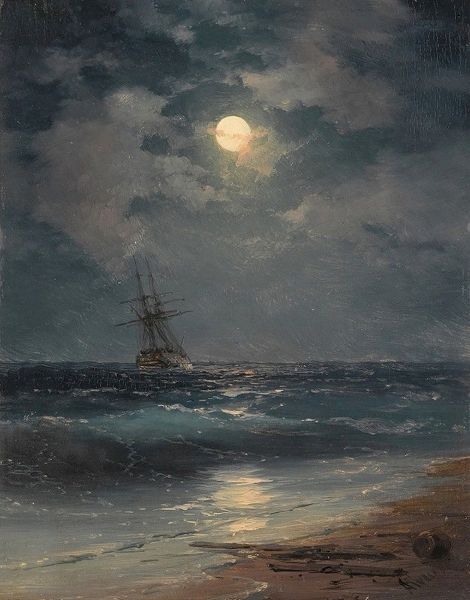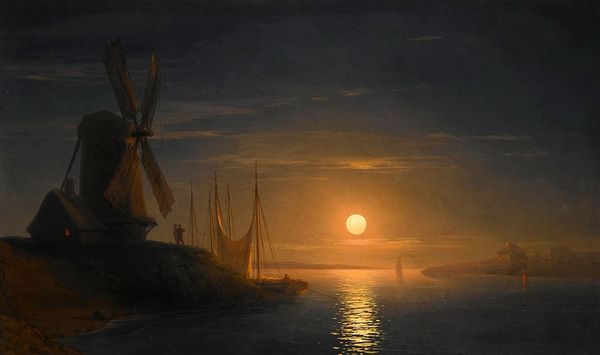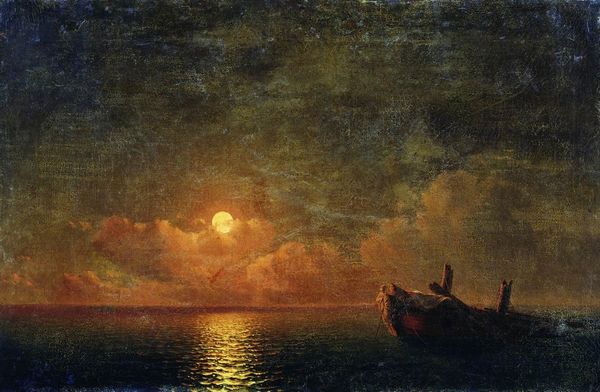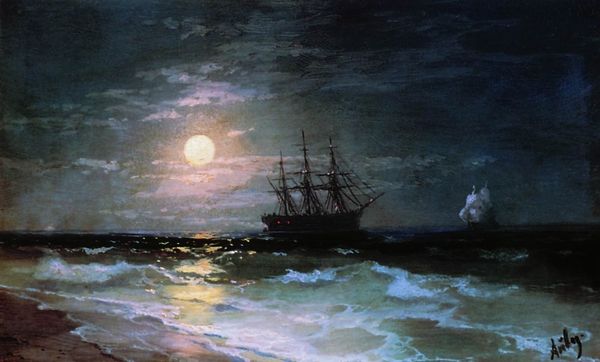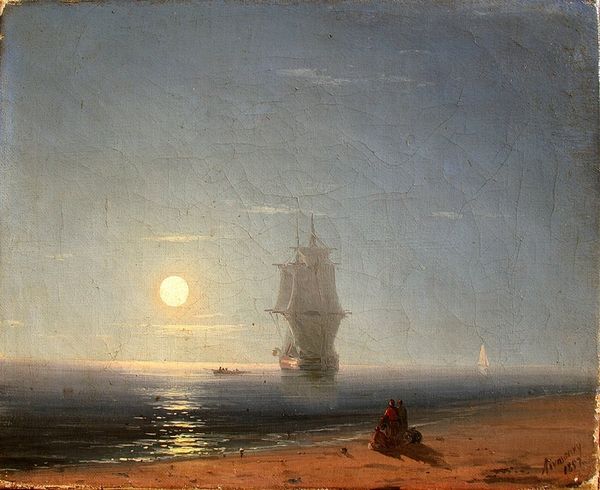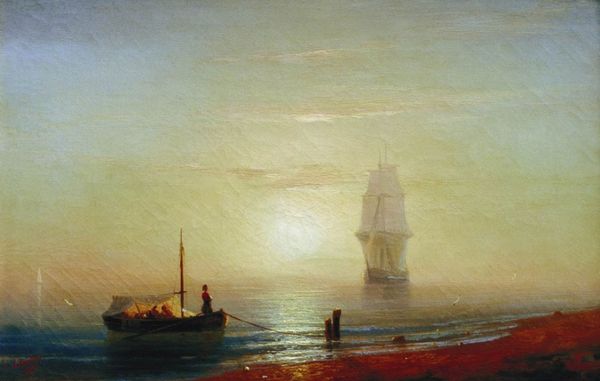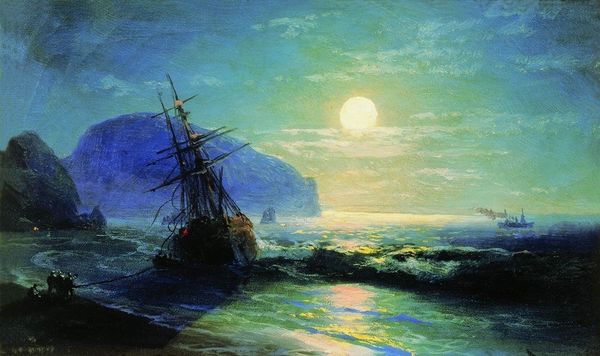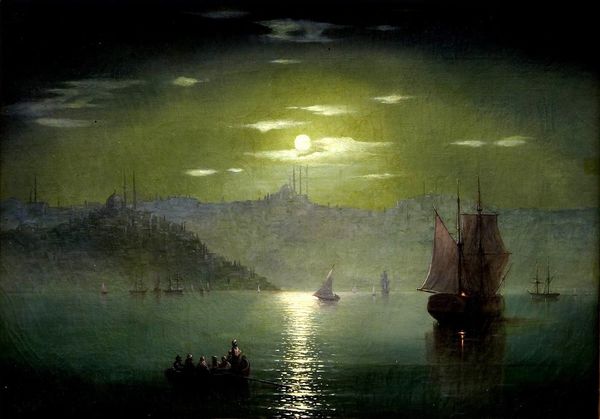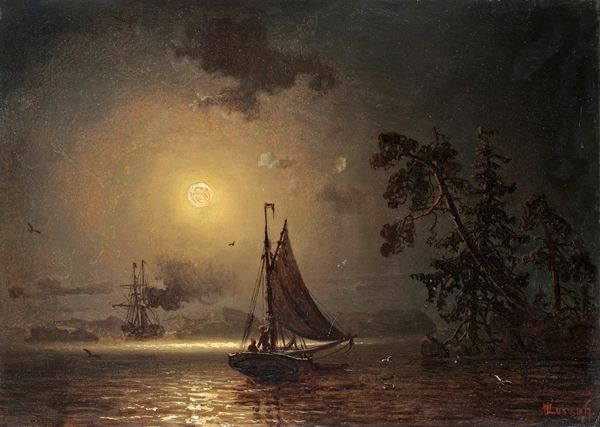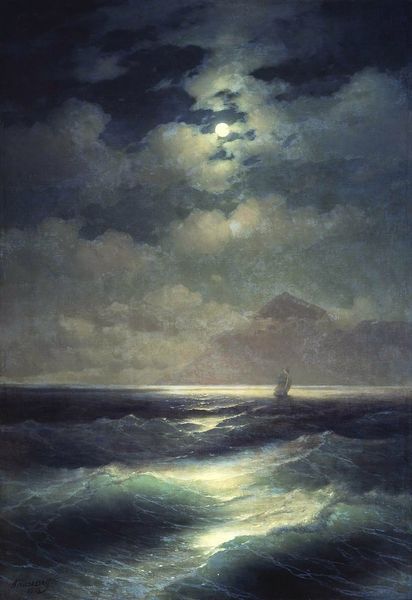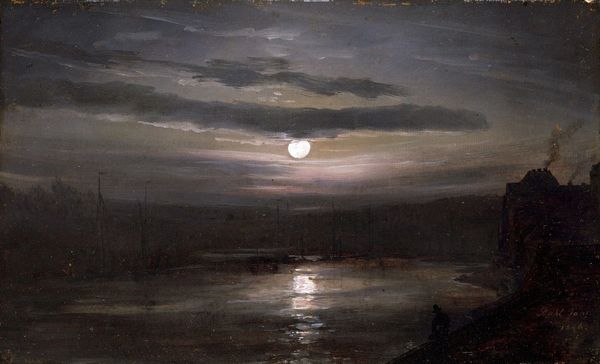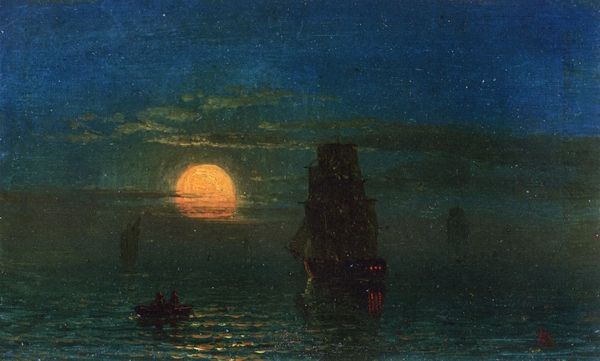
Copyright: Public domain
Editor: We’re looking at Ivan Aivazovsky's "Lunar Night" from 1899. It's an oil painting and quite striking, the moon hangs so heavy and luminous. There's a ship offshore, bathed in this ethereal light, and some figures huddle on the beach. The overall impression I get is one of stillness, but also, maybe, some apprehension. What do you see in it? Curator: Ah, Aivazovsky. Always drawn to the sea, that old romantic! He had a way of making water breathe, didn’t he? For me, this painting whispers of journeys – not just physical voyages, but those introspective wanderings of the soul we all embark on. Notice how the moon isn't just a light source, it's almost a character, watching, judging. Editor: Yes, and it throws this incredible silver path across the water right to the ship! Curator: Exactly! That gleaming path… is it an invitation, a warning, or simply a reflection of dreams? And the ship itself – powerful yet vulnerable under that vast sky. Makes you wonder what stories it carries, what storms it has weathered. And those figures on the shore – what do you suppose they're contemplating? Editor: Maybe loved ones waiting for the ship to return? Or are they simply admiring the night? I didn't really consider that before. Curator: He leaves that open for us, doesn't he? Romanticism often plays with ambiguity, with that delicious sense of the unknown. The sublime in nature and human emotion intertwined! Editor: It's made me look at the moon, not just as a celestial body, but something imbued with deeper feeling and significance. Curator: Precisely! Aivazovsky, he wasn't just painting water, was he? He was painting feelings, longings, the quiet drama of the human heart mirrored in the vastness of the sea.
Comments
No comments
Be the first to comment and join the conversation on the ultimate creative platform.
